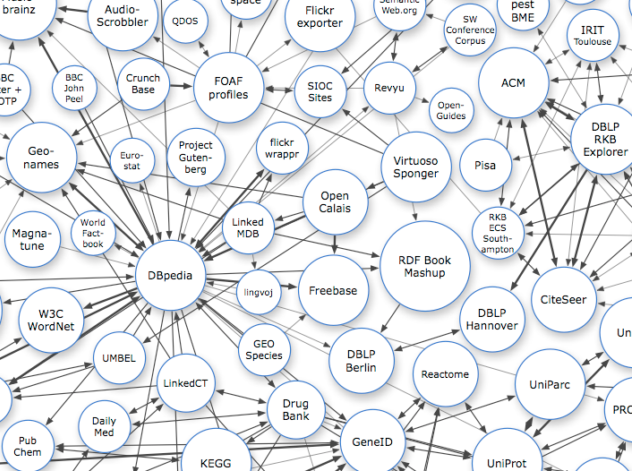
The image below gives a tiny glimpse of existing Linked Open Databases.


Europeana.eu, a project to connect the cultural data of Europe, has an introductory video (caveat: this was written by someone who wasn’t very good at internet searching and apparently ignorant of the ‘picture’ search function … but the basic idea is there!).
If you would like to learn more there is a tutorial here, provided by LinkedDataTools.com.
This website uses cookies so that we can provide you with the best user experience possible. Cookie information is stored in your browser and performs functions such as recognising you when you return to our website and helping our team to understand which sections of the website you find most interesting and useful.
Strictly Necessary Cookies should be enabled at all times so that we can save your preferences for cookie settings.
If you disable this cookie, we will not be able to save your preferences. This means that every time you visit this website you will need to enable or disable cookies again.
More information about our Cookie Policy
The cookies used on this website have been categorised using best practice. A list of all the cookies used on this website by category is set out below. Cookies on our website will not be used for any purpose other than the ones stated.
It is important to note that by using our site, you agree to our use of cookies as described in this Cookie Policy. You may return to this page at any time in order to change your consent relating to non-essential, third-party cookies which relate to targeting and analytics.
